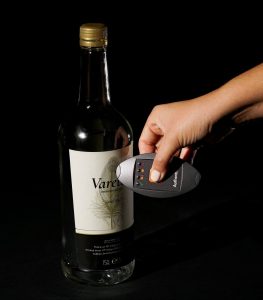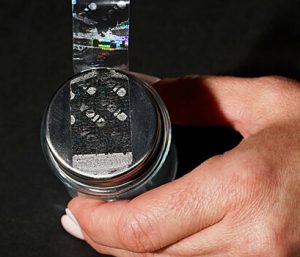Part 3 of the ABC’s of Brand Protection series by Authentix focusing on the global scope of the counterfeiting epidemic and how to take action against it to protect your brand, your customers and your revenue.

We must face the facts. Counterfeiters make it their mission to knock off high-value products and they can be very good at it. With the right tools and illegal intent, a counterfeiter can create a product and packaging close enough to the original to easily fool consumers. And as technology becomes more accessible, it only gets easier for them to duplicate the basic one-dimensional protection measures a brand might implement. To fight back, you’ll need an arsenal of security features that can be woven seamlessly into the product and packaging design making it far less vulnerable to bad actors.
Each security feature serves a unique purpose. Overt or visible features allow the end consumer to verify authenticity of their purchased product. There are also covert or invisible markings enable trained inspectors to quickly authenticate genuine products in the supply chain, identify the source of diversion or determine other illicit activities. When combined with careful design and production quality controls, these features raise the bar of complexity for counterfeiters and make the product a less attractive target.
Let’s break down six basic categories of anti-counterfeiting features. You might have implemented one as a security tactic, but still battling diversion in the marketplace. Rather than one and done, think of these tactics as a multidimensional security wall that helps identify authentic products from fakes.
- Overt Security Features – These visible features can easily be detected and are often beautifully incorporated into the design of the product or packaging.
 Covert or Semi-Covert Security Features – Covert and semi-covert features are invisible to the naked eye or disguised but can be found and measured with specialized handheld devices using proprietary optics and detection algorithms for rapid, secure field authentication.
Covert or Semi-Covert Security Features – Covert and semi-covert features are invisible to the naked eye or disguised but can be found and measured with specialized handheld devices using proprietary optics and detection algorithms for rapid, secure field authentication.
- Forensic Security Features – Forensic analysis involves laboratory testing of products via an embedded (non-native) component or molecule added to a substrate or solution to determine authenticity.
- Serialization or Track and Trace Features – The application of individual unique codes at the point of manufacture (giving each product an identifiable attribute) and defined scanning locations where retrieval and association of the unit can be linked to the scanning transaction.
- Digital solutions – The application of a unique code, number or symbol that results in a digital ID recorded in a database. Product attributes such as manufacturing date and time, expiration dates, lot numbers, pictures, and a host of other origin information can be added to the database record and associated with the product.
- RFID – Radio Frequency Identification (RFID) is a small antenna and receiver system where a unique product-level ID is hidden or embedded in a small chip or printed label. The ability of these “electronic labels” to communicate with a centralized database system performs like other track and trace systems.
 One Tactic Is Not Enough
One Tactic Is Not Enough
An effective multilayered approach using overt, covert, and forensic security features is the most effective long-term solution to detect and deter counterfeiting. When incorporated into labels, closure seals, storage cartons, and packaging, each type of feature serves a unique purpose — from color-shifting ink that allow end-users to quickly identify a branded product as genuine to covert markings that enable an inspector to identify many factors involved with the source of authenticity.
For a deeper dive into the details of each type of security feature and other brand protection basics – why it is necessary, how it works, who is vulnerable, how to implement an effective program, what to look for in a technology partner, and which emerging technologies will make a difference in the future – download the eBook, The ABC’s of Brand Protection.
